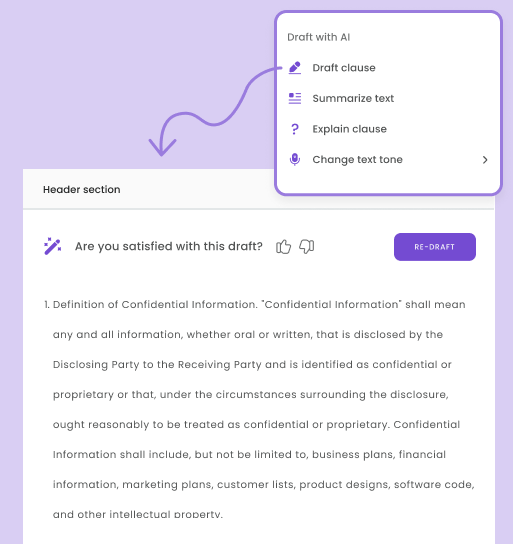In the past, a swivel chair process was par for the course. Data was entered manually, systems were separated, and there were many errors, and so on.
With the rise of process engineering and business process automation, swivel chair processes are no longer acceptable.
In this guide, you’ll learn what a swivel chair process is, the key characteristics of a swivel chair process, how to identify it, and a few strategies to get rid of it.
Characteristics of the Swivel Chair Process
A swivel chair process may not be apparent at first glance. There are a few key characteristics that most, if not all swivel chair processes have. You can use these characteristics to identify them.
Additionally, you can use employee feedback, workflow audits, and process analysis to further narrow down the processes that qualify. Let’s look at the main characteristics.
Manual Data Entry
One of the hallmarks of a swivel chair process is regularly doing manual data entry. This occurs when you take data from one system and enter it into another system.
The systems being used aren’t integrated so you’re unable to automate the transfer of data. You end up acting as the bridge. The information gets transferred but it takes a lot of time and effort. There’s also a lot of room for errors.
System Disconnects
In this case, there is an integration between the tools you use but not all the data can be transferred or there are system outages.
You’re required to go in, check which data has been transferred, enter the missing information, or re-enter information that should have been added. At times, you’ll have to make choices based on the incomplete data at your disposal.
Repetitive Tasks
Doing the same task over and over again can become tedious – which is another hallmark of a swivel chair process. Things like copying and pasting data, logging into your tools to extract data, creating reports that only deliver part of the picture, etc. are performed over and over again.
This takes you away from strategic tasks and your productivity also takes a nose dive. In short, it’s poor resource utilization that’s amplified by the volume of repetitive tasks.
High Error Rates
This is one of the most damaging aspects of a swivel chair process. Errors are commonplace. Every time you switch from one system to another or copy data from one place to another, you increase the likelihood of errors.
These errors pile up over time and can lead to increased time fixing them, damaged reputations, and a host of other negative outcomes. Top of Form
Bottom of Form
Why Do Swivel Chair Processes Exist?
Inefficient processes exist for many reasons. Sometimes, it’s due to organizational policy limitations, other times, it’s due to a lack of resources, and at other times, it’s due to the inability to adapt to changing circumstances.
Below, you’ll learn some of the more common reasons. Keep in mind that this isn’t an exhaustive list and swivel chair processes may crop up for a wide range of reasons.
Legacy Systems
When a company has been around for a while, it’s common for them to have older systems. These systems aren’t always built with the future in mind and may not have modern integration options.
Even the way they’re built makes it difficult to go in and build integrations with other tools you may be using. This leads to a lot of manual effort to extract and integrate data between systems.
Rapid Growth
Oftentimes, when a company or organization grows quickly, its processes aren’t able to keep up with them. Quick fixes are the norm and they’ll often break or fail to complete the job. If there’s no time or a lack of resources to perform a deep RCA, swivel chair processes may evolve to bridge the gap.
As time goes on, they become a key part of important workflows and are even more difficult to remove. The result is inefficient processes that you depend on.
Siloed Operations
When a company is small, everyone works together. When an organization grows, departments evolve and operations get separated. These separate operations lead to silos where people don’t share information and systems don’t communicate.
Working in an environment like this inevitably leads to swivel chair processes. You or someone will need to manually enter data and serve as the bridge between different departments and systems.
Resource Constraints
Every business has resource constraints. Sometimes, they’re manageable and sometimes they’re not. Swivel chair processes can arise because of constraints that get a ‘quick fix’. This can occur whether the constraint is financial, staffing, or technical.
When process improvement is neglected or simply cannot be done at the time, you end up with broken processes that end up holding you back.
Problem of the Swivel Chair Process
I’ve written a lot of words so you probably have a good idea of why a swivel chair process is something to avoid. Let me spell it out for you in this section by pointing out specific reasons why it’s problematic.
Decreased Efficiency
They just don’t work well. Moving from one task to another or one system to another to transfer data takes time and doesn’t produce the best ROI. That time could be spent on high-level strategic tasks that move your organization forward.
The back and forth reduces the speed of workflows, creates bottlenecks, and drags down your productivity. It’s not a recipe for success.
Increased Costs
The longer things take – decreased efficiency – the more it ends up costing you. This is both a direct increase in cost and indirect. More time equals more money spent. Indirectly, there are more errors that cost money to fix. That could be in the form of corrections and or reputation.
Also, because systems are disjointed, you lose the opportunity to connect and automate processes. This is an indirect cost center due to missed opportunities.
Employee Frustration
Nobody likes repetitive and monotonous work that’s prone to errors. It’s tedious, doesn’t showcase their skills, has no sense of fulfillment, and so on.
If someone is stuck managing a swivel chair process for an extended period, they can easily become disengaged with the work. This will lead to more errors and delays as well as higher employee attrition.
Risk of Errors
This has been said multiple times but it bears repeating. Swivel chair processes breed errors. This is due to many factors such as manual data entry, the monotonous nature of the tasks, details being overlooked, etc.
The problem is that errors can slip through the cracks and multiply the costs associated with producing a product or service. The errors in data and other aspects lead to poor decision-making, lack of confidence, and a damaged reputation.
Negative Customer Impact
Ultimately, swivel chair processes affect your customers as well. Delays, mistakes, or inconsistencies in service delivery caused by inefficient internal workflows can lead to dissatisfaction.
If your organization cannot meet customer expectations due to the inefficiencies of swivel chair processes, it risks losing trust, damaging its reputation, and potentially forfeiting long-term business.
Strategies to Eliminate Swivel Chair Processes
There are many ways to tackle swivel chair processes head-on. Below are some strategies you can start implementing today.
Integration of Systems
Integrating systems is one of the most effective ways to eliminate swivel chair processes. By enabling seamless data exchange between your tools, you reduce the need for manual data entry and system toggling.
Leveraging APIs or middleware solutions can help bridge the gap between existing platforms, ensuring that information flows smoothly across your organization.
Process Automation
Automating repetitive tasks is another powerful strategy. By implementing automation tools, you can streamline activities like data entry, report generation, and task assignments.
Automation not only increases efficiency but also minimizes the risk of human errors, freeing you to focus on more value-added responsibilities.
Unified Platforms
Adopting unified platforms can help you consolidate operations within a single system. With all your key functionalities in one place, you eliminate the need to switch between multiple tools.
Enterprise resource planning (ERP) systems or customer relationship management (CRM) platforms are examples of solutions that integrate diverse workflows into a centralized hub.
Workflow Redesign
Sometimes, eliminating swivel chair processes requires rethinking your workflows entirely. You can redesign processes by identifying redundancies, removing unnecessary steps, and aligning tasks with modern tools.
This ensures that your workflows are not only efficient but also aligned with your organization’s goals and technology capabilities.
Employee Training
Even with advanced systems in place, proper employee training is essential to eliminate swivel chair processes.
When you provide training on new tools and workflows, employees can transition smoothly and use the systems effectively. Ongoing support and resources ensure that everyone is equipped to adapt to the changes.
Regular System Evaluation
Regularly evaluating your systems and processes helps you stay ahead of potential swivel chair issues. By conducting periodic reviews, you can identify outdated tools, inefficiencies, or emerging integration needs.
This proactive approach ensures that your organization evolves alongside technological advancements, preventing the recurrence of swivel chair processes.
Conclusion
Swivel chair processes may be more common than you think and are quietly sapping the efficiency of your organization.
It’s important to proactively look for them and eliminate them.
This guide has shown you what they are, key characteristics, and the problems they present. It has also provided you with steps to take to eliminate them.
Start by identifying the swivel chair processes, doing a process audit or analysis, and then implementing the strategies outlined in this post. If possible




